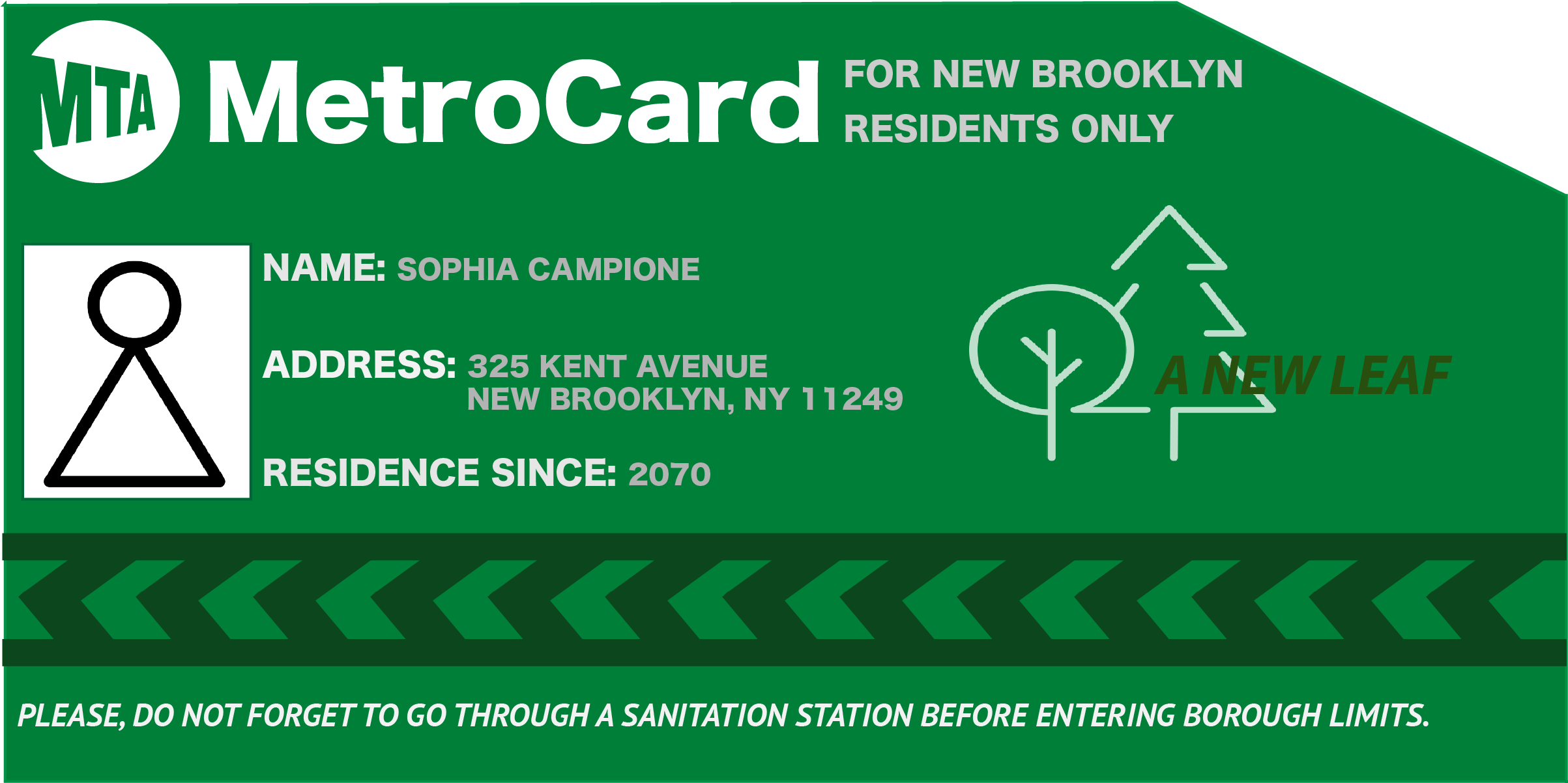Future Artifact
pt 3: Future Artifact - Designing New Brooklyn, A Sustainable Forest City Concept for 2045
Overview
In envisioning the year 2045, a world characterized by complete sustainability emerges, propelled by the implementation of progressive policies akin to the Green New Deal and the adoption of liberal ideals. Despite challenges such as mass urbanization, innovative urban planners tackle the issue by transforming cities into megaregions with self-sufficient homes and abundant green spaces. Forest cities, a new concept in urban planning, encapsulate cities in an abundance of vegetation and run entirely on green energy. However, they must limit population to sustain themselves, leading to potential socioeconomic externalities. This study explores the design journey of creating New Brooklyn, a sustainable forest city concept, highlighting the intricate balance between environmental stewardship, social inclusivity, and economic viability.
Approach
The design endeavor for New Brooklyn was driven by a holistic view of urban sustainability, aiming to address climate change and urbanization while considering externalities on the larger New York ecosystem and community. Drawing inspiration from Studio Nab's Urban Vertical Farm and forest city concepts, the research explored the integration of organic farming, renewable energy, and innovative transit systems into urban planning. A multidisciplinary approach incorporating urban design, sociology, and environmental science guided the exploration of potential societal impacts and economic considerations.
Design & Innovation:
Central to the design concept of New Brooklyn is the harmonious coexistence of nature and urban living. By reimagining traditional urban infrastructure, the city boasts self-sufficient homes equipped with organic farms, energy-efficient systems, and sustainable transportation options. Notably, the development of resident and non-resident transit cards reflects a need to consider impacts on the city’s constituents daily lives, access, and inclusiveness while ensuring efficient management of New Brooklyn’s resources.
Societal Implications
While forest cities offer promising solutions to environmental challenges, they present complex socioeconomic externalities. Population limitations, access barriers, and economic disparities emerge as key considerations in ensuring equitable participation and community engagement. The design approach necessitated a nuanced understanding of political, economic, and cultural dynamics to mitigate potential exclusivity and foster social cohesion. Furthermore, the integration of sanitation systems and transit infrastructure underscores the importance of public health and environmental stewardship in sustainable urban development.
Impact & Reflection
The design journey for New Brooklyn prompted a shift in mindset towards considering the broader implications of urban planning solutions. Recognizing the interconnectedness of design decisions and societal outcomes, future iterations aim to explore the transition from existing infrastructure to sustainable alternatives, particularly in public transit systems. Embracing a holistic approach that balances environmental, social, and economic factors will be critical in realizing the vision of New Brooklyn as a model for sustainable urban living.

